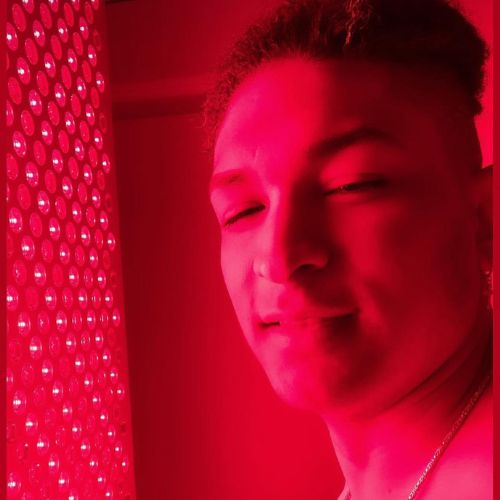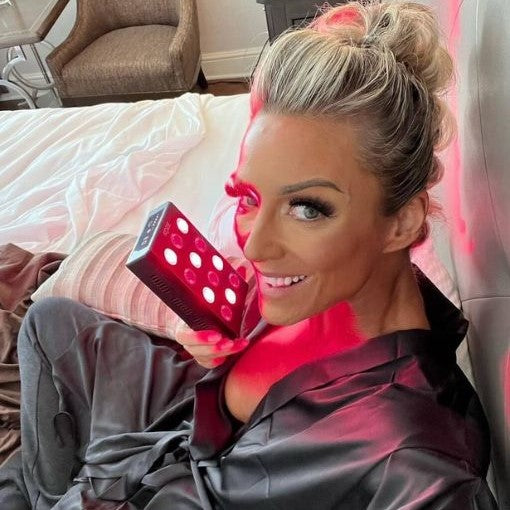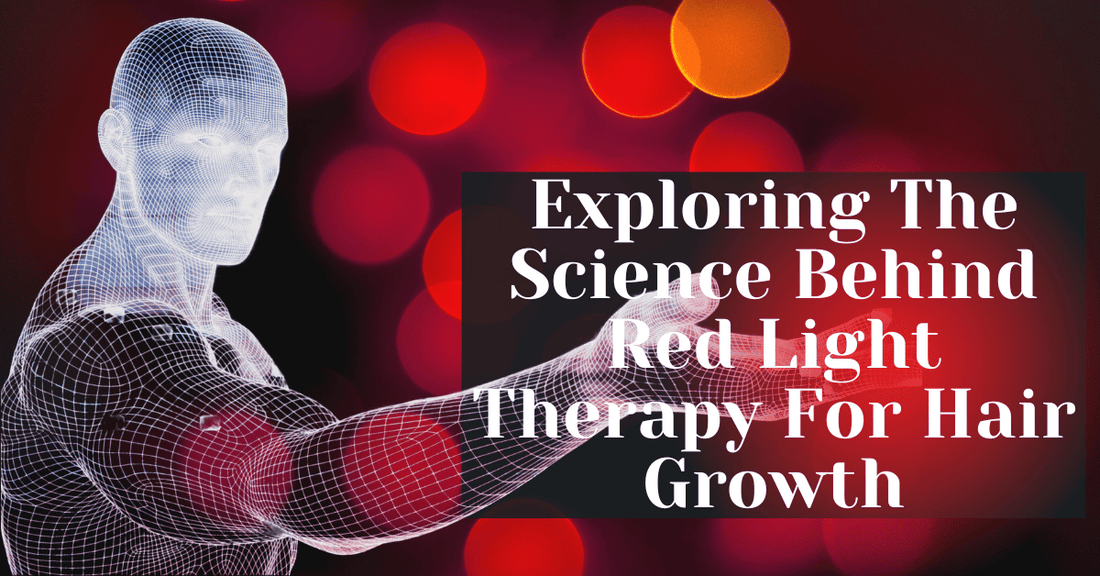
Exploring The Science Behind Red Light Therapy For Hair Growth
Welcome to our comprehensive guide on Red Light Therapy (RLT) for hair growth, a topic gaining considerable attention in the beauty and health industries. This therapy, known for its gentle yet effective approach to hair loss, offers a beacon of hope for those struggling with various hair loss conditions. As we delve deeper into red light therapy as a treatment, we will explore the scientific mechanisms, benefits, and practical advice on using red light therapy to potentially enhance your hair’s health and density.
Red and light therapy for hair, combines innovation with simplicity, but understanding how it translates into hair growth requires a closer look at its scientific basis and real-world applications. Whether you are a healthcare professional, someone experiencing hair loss, or simply curious about new beauty treatments, this post aims to provide valuable insights and clear, actionable information.
Join us on this fascinating trip to see if red light therapy holds the key to maximizing the growth potential of your natural hair.
What is Red Light Therapy?
Red Light Therapy (RLT), also known as low-level laser, low-level light therapy for hair (LLLT), or photobiomodulation, is a therapeutic technique that uses visible red light laser low-level wavelengths of laser light to treat skin issues, such as wrinkles, scars, and persistent wounds, among others. In recent years, it has gained popularity for its role in promoting hair growth and improving hair health.
A Brief History

Originally discovered by NASA, red light therapy was used to grow plants in space. Scientists soon found that it could also heal human skin and manage muscle atrophy and bone density issues in astronauts. From these space-age beginnings, RLT has evolved into a widely used treatment for a variety of medical conditions, including alopecia (hair loss).
Modern Applications
Today, RLT is used not only in medical settings but also in cosmetic ones, where it's applied to improve skin health, increase collagen production, reduce inflammation, and enhance hair growth. It's available in various formats, from large professional devices used in clinics to handheld units for home use.
The technology behind red-light therapy for hair is relatively straightforward: it emits either red-light therapy or near-infrared light, which penetrates the outer layer of the skin without causing damage. This light is absorbed by mitochondria—the powerhouses of the cell—where it helps increase energy production. In the context of hair follicles, this means enhanced cellular activity that can lead to improved hair growth.
RLT's Simplicity and Accessibility:
-
At-home devices: Handheld and desktop units make it easy for individuals to incorporate RLT into their daily routines.
-
Professional treatments: are offered in dermatology clinics and hair restoration centers, where stronger devices are used for more intensive treatment.
The simplicity of the the red light therapy treatment itself, combined with its non-invasive nature, makes red light laser therapy a compelling option for those seeking alternatives to more invasive hair loss treatments.
How Does Red Light Therapy Promote Hair Growth?
Red Light Therapy (RLT), also known as a low level of laser therapy or red light therapy device (LLLT), promotes hair growth through a process that may seem simple but is backed by complex biological interactions.
LLLT devices, emitting red or infrared light in the 600–700 nm range, are specifically designed to increase cellular activity and stimulate hair follicles, making them particularly beneficial for treating androgenetic alopecia and other types of alopecia.
Here’s how it works: This non-invasive therapy enhances the safety and potential of RLT as a complementary treatment to medical or surgical hair loss solutions, emphasizing its role and benefits in the hair growth process.
Mechanism of Action
-
Mitochondrial Activation: When red light wavelengths penetrate the human scalp, they are absorbed by the mitochondria within the hair follicle cells, mediating the growth of human scalp hair. This absorption enhances the function of the mitochondria, leading to an increase in adenosine triphosphate (ATP) production. ATP is the energy currency of the cell, which fuels cellular activities, including those needed for hair growth.
-
Increased Blood Flow: RLT stimulates the capillaries under the scalp, improving blood circulation. More nutrients and oxygen are delivered to the hair follicles by this enhanced blood flow, which is essential for encouraging hair growth and averting hair follicle shrinkage.
-
Reduction in Inflammation: Chronic inflammation around the hair follicles can inhibit hair growth and lead to hair loss. Red light therapy helps reduce inflammation, providing a healthier environment for hair follicles to thrive.
Enhancing Cellular Health
The overall effect of RLT on the cells of the human scalp hair, is an enhanced environment for hair growth and hair follicle recovery. By boosting cellular energy and reducing inflammation, RLT helps "wake up" dormant hair follicles, potentially for hair regrowth and reversing the process of hair thinning and loss.
Scientific Backing
The mechanisms by which RLT aids in hair growth are supported by various scientific studies that have noted increased hair count and improved hair density in participants who underwent regular RLT treatment. Some of the studies included 'sham device-controlled trials' to rigorously test the effectiveness of red light therapy for hair growth, against placebo effects.
Case Study: Real-World Impact
-
Study Overview: A 2014 study published in the American Journal of Clinical Dermatology observed two groups of people with alopecia. One group was treated with RLT, while the other was not.
-
Results: The group that received RLT showed a statistically significant increase in hair density compared to the control group.
-
Conclusion: This study is one of several that illustrate the potential of RLT as a non-invasive alternative to traditional hair growth methods.
Scientific Studies Supporting RLT for Hair Growth
The effectiveness of Red Light Therapy (RLT) in promoting hair growth is not just anecdotal; it is backed by several scientific studies that demonstrate its potential benefits. Below, we delve into some key research findings that illustrate how RLT can be an effective treatment for hair loss.
In the context of female pattern hair loss, RLT has shown promising results. Studies highlight the effectiveness of red light therapy in treating this condition, with one notable study revealing that women participants who received red light therapy treatment experienced even better hair growth outcomes than men.
Another trial found a significant 51% increase in hair counts for women undergoing red light therapy at a wavelength of 650 nm, underscoring the need to combine red light therapy over laser therapy and its potential as a targeted treatment for female pattern hair loss.
Key Research Findings
1. 2013 Study on Androgenetic Alopecia
-
Objective: To evaluate the efficacy of RLT in treating androgenetic alopecia, a common form of hair loss.
-
Methodology: Participants received RLT treatments several times a week for six months.
-
Results: Participants showed a significant increase in hair density and improved hair strength.
-
Source: "Effect of a Low-level Laser on Hair Growth in Men with Androgenetic Alopecia", Journal of Dermatological Treatment.
2. 2016 Follow-up Study with Female Participants
-
Objective: To determine if the positive effects of RLT on hair growth were consistent across genders.
-
Methodology: Female participants with thinning hair underwent similar RLT treatment protocols.
-
Results: Similar to the 2013 study, an increase in hair density and a fuller appearance of hair were noted.
-
Source: "Efficacy of Low-Level Laser Therapy for Women with Androgenetic Alopecia", International Journal of Women's Dermatology.
3. Meta-Analysis of RLT Hair Growth Studies
-
Objective: To compile and review multiple studies to assess the overall effectiveness of RLT for hair growth.
-
Methodology: Analysis included data from over ten studies with varying sample sizes and treatment durations.
-
Results: The meta-analysis concluded that RLT treatments consistently resulted in hair regrowth in both male and female patients across various types of hair loss.
-
Source: "Red Light Therapy for Hair Loss: A Meta-Analysis", Dermatologic Therapy.
Systematic Review Highlights
A systematic review published in the "Journal of Cosmetic and Laser Therapy" provided a comprehensive overview of RLT studies, highlighting laser therapy alone's ability to stimulate hair growth and improve scalp health without significant adverse effects. This review supports RLT as a viable option for individuals looking for non-invasive treatments for hair loss.
Visual Representation: Summary Table of Studies
| Year | Study Focus | Sample Size | Results | Published In |
|---|---|---|---|---|
| 2013 | Male Androgenetic Alopecia | 100 | Increase in hair density | Journal of Dermatological Treatment |
| 2016 | Female Androgenetic Alopecia | 75 | Fuller hair appearance | International Journal of Women's Dermatology |
| 2020 | Meta-Analysis of RLT on Hair Loss | Multiple | Consistent hair regrowth | Dermatologic Therapy |
These studies collectively demonstrate the scientific basis behind RLT's effectiveness in promoting hair growth. They provide a solid foundation for considering red light therapy as part of a comprehensive hair care and restoration strategy.
Benefits of Red Light Therapy for Hair
Red Light Therapy (RLT) offers several compelling benefits for hair health, making it an attractive option for those experiencing hair thinning or pattern hair loss too. Below, we explore the key advantages of incorporating RLT into your hair care regimen.
Increased Hair Density and Thickness

-
Direct Impact: RLT stimulates hair follicles, encouraging the growth of new hair and increasing the thickness of existing hair strands. This results in an overall denser appearance of the hair.
-
Scientific Basis: Studies have shown that the energy from red light boosts cellular activity in the hair follicles, promoting the anagen (growth) phase of hair.
Improved Scalp Health

-
Scalp Benefits: By improving blood circulation to the scalp, RLT enhances the delivery of nutrients and oxygen to hair follicles, which is crucial for maintaining a healthy scalp.
-
Reduction of Inflammation: RLT has anti-inflammatory properties, which can alleviate scalp conditions like psoriasis or dermatitis that may hinder hair growth.
Enhanced Hair Strength and Durability
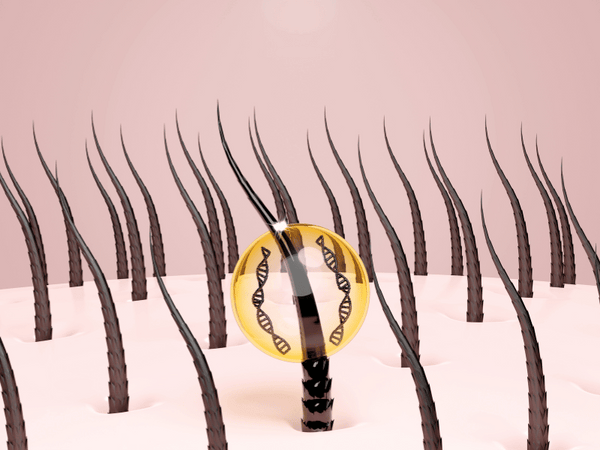
-
Resilience Against Breakage: Users often report that their hair feels stronger and more resilient after regular RLT treatments. This can lead to decreased hair breakage and loss.
-
Mechanism: The light encourages better protein synthesis and nutrient absorption in hair follicles, strengthening the hair shaft.
Down Hair Loss

-
Preventive Measure: RLT can help slow the progression of hair loss, especially in cases like androgenetic alopecia, by keeping hair follicles in the growth phase longer.
-
Supporting Research: Clinical trials indicate that regular use of RLT can effectively extend the lifespan of hair follicles, delaying the onset of the shedding phase.
Non-Invasive and Safe
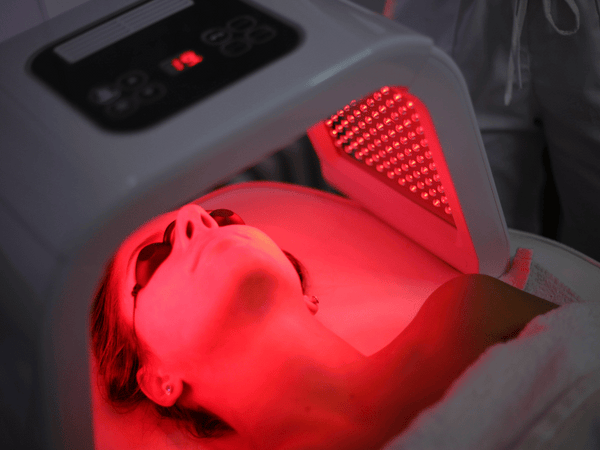
-
Ease of Use: Unlike surgical interventions or pharmaceutical treatments, RLT offers a non-invasive alternative that is simple and pain-free.
-
Low Risk: Given its non-invasive nature, RLT comes with minimal risks, making it a safe option for long-term use.
User Testimonials and Anecdotal Evidence
While scientific studies provide a strong foundation for RLT's benefits, personal testimonials and user reviews often highlight its effectiveness in real-world applications. Many users report noticeable improvements in hair quantity and quality within a few months of consistent treatment.
Who Can Benefit from Red Light Therapy?
Red Light Therapy (RLT) is versatile, benefiting a wide range of individuals experiencing different types of hair loss or seeking to improve their hair health. A significant aspect of RLT's effectiveness lies in its use of light emitting diodes (LEDs), which are pivotal in devices designed for both home users and professional treatments.
These LED-based devices utilize non-coherent LEDs to emit light of specific wavelengths, crucial for stimulating hair growth. The number of LEDs in a device directly correlates with its red light, emission and efficiency, making them a key factor in the treatment's success. Understanding who can most benefit from RLT, especially treatments involving LED technology, can help tailor treatments for optimal results.
Effectiveness Across Different Types of Hair Loss
1. Androgenetic Alopecia

-
Description: The most common form of hair loss, known as male or female pattern baldness.
-
RLT Benefits: RLT can be particularly effective for this condition by extending the growth phase of hair follicles and increasing hair density.
-
Ideal Candidates: Both men and women with early signs of pattern baldness.
2. Alopecia Areata
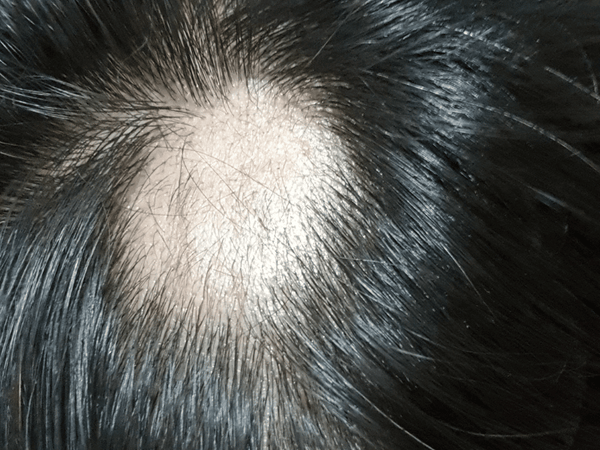
-
Description: An autoimmune disorder that causes patchy hair loss.
-
RLT Benefits: While RLT won't cure the autoimmune problem, it can stimulate hair follicles to grow hair more robustly in affected areas.
-
Ideal Candidates: Individuals with recent onset or small areas of hair loss.
3. Telogen Effluvium
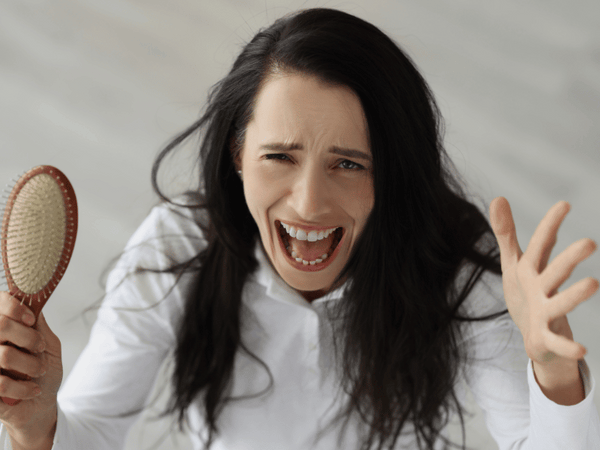
-
Description: Temporary hair loss typically triggered by stress, shock, or a traumatic event.
-
RLT Benefits: Can help accelerate the recovery phase, promoting quicker regrowth of hair.
-
Ideal Candidates: Individuals experiencing stress-related hair shedding.
Age and Gender Considerations
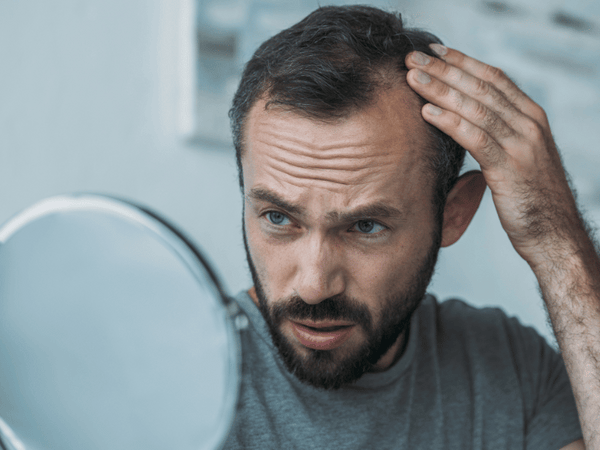
-
Age: RLT is effective for all ages, but it is especially beneficial for those in the early stages of hair loss, where the potential to stimulate hair growth is higher.
-
Gender: Both men and women can benefit equally from RLT, making it a versatile treatment option for hair loss regardless of gender.
Hair Types and Colors
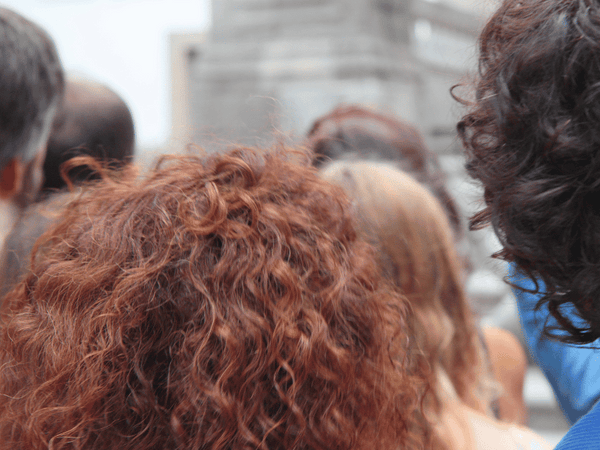
-
Hair Types: RLT is effective for all hair types—curly, straight, wavy, or coiled.
-
Hair Colors: The therapy is color-agnostic, meaning it works equally well for all hair colors, including dyed hair.
Accessibility and Suitability
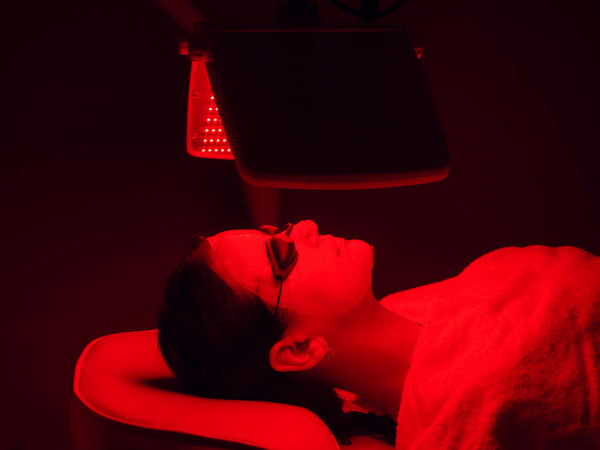
-
Home Users: Individuals who prefer home treatments can benefit from using handheld or wearable RLT devices.
-
Professional Treatments: Those looking for more intensive therapy may opt for professional treatments at clinics.
Summary Table: Who Can Benefit from RLT
| Hair Loss Type | Description | RLT Suitability |
|---|---|---|
| Androgenetic Alopecia | Common pattern baldness in men and women | Highly suitable |
| Alopecia Areata | Patchy hair loss due to autoimmune issues | Moderately suitable |
| Telogen Effluvium | Stress-related temporary hair loss | Highly suitable |
Considerations Before Starting RLT
-
Consultation: Always consult with a healthcare provider or dermatologist to understand the underlying cause of hair loss and determine if RLT is a suitable treatment.
-
Expectations: Set realistic expectations about the outcomes based on individual health conditions and hair loss severity.
Comparing Red Light Therapy to Other Hair Growth Treatments
Red Light Therapy (RLT) is just one of many options available for promoting hair growth. Understanding how it compares to other common treatments can help individuals make informed decisions about the best approach for their hair loss. Here’s a detailed comparison of RLT with other popular hair growth methods.
1. Minoxidil (Rogaine)

Mechanism: A topical treatment that stimulates hair follicles to grow through vasodilation, which increases blood flow to the areas.
Pros:
-
Well-documented efficacy for many users.
-
Non-prescription, easily accessible.
Cons:
-
Must be applied daily, and effects are reversed if usage is discontinued.
-
Can cause scalp irritation or unwanted facial hair growth.
Best For: People with early-stage pattern baldness looking for a proven, affordable treatment.
2. Finasteride (Propecia)
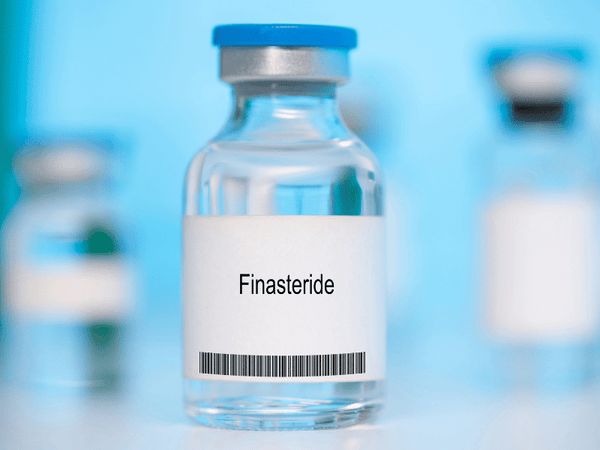
Mechanism: An oral medication that prevents the conversion of testosterone to DHT, a hormone associated with hair loss.
Pros:
-
High effectiveness for many men.
-
Once-a-day pill, easy to take.
Cons:
-
Prescription required.
-
Potential for serious side effects, including sexual dysfunction.
-
Not suitable for women.
Best For: Men with progressive hair loss who are willing to commit to long-term treatment.
3. Hair Transplant Surgery

Mechanism: Surgical removal of hair follicles from a dense hair growth increase the area to a balding area.
Pros:
-
Provides permanent, natural-looking results.
Cons:
-
High cost and invasive nature.
-
Potential for infection, scarring, and post-surgical pain.
Best For: Individuals with sufficient donor hair and the financial means for a permanent solution.
4. Red Light Therapy
Mechanism: Uses low-level red light to enhance cellular energy production and promote hair growth.
Pros:
-
Non-invasive and pain-free.
-
Can be used at home with portable devices.
Cons:
-
May require consistent, long-term use to maintain results.
-
Effectiveness can vary based on the individual's condition.
Best For: People seeking a safe, non-pharmaceutical treatment to complement other hair loss therapies.
Comparison Chart
| Treatment | Mechanism | Pros | Cons | Best For |
|---|---|---|---|---|
| Minoxidil | Vasodilation to increase blood flow | Non-prescription, proven effectiveness | Daily application, potential irritation | Early-stage pattern baldness |
| Finasteride | Blocks DHT production | High effectiveness for men | Prescription, potential side effects | Men with progressive hair loss |
| Hair Transplant | Surgical hair follicle transfer | Permanent, natural results | High cost, invasive | Those with adequate donor hair |
| Red Light Therapy | Enhances cellular energy in follicles | Non-invasive, can be used at home | Requires consistent use | Complementary treatment seekers |
Deciding on a Treatment Plan
When choosing a hair loss treatment, it’s important to consider individual factors such as the extent of hair loss, budget, personal health, and lifestyle. Consulting with healthcare professionals can provide guidance tailored to specific needs and conditions.
How to Use Red Light Therapy for Hair Growth
Utilizing Red Light Therapy (RLT) effectively for hair growth involves understanding the optimal ways to apply the treatment, whether at home or in a professional setting. Here’s a comprehensive guide on how to use RLT to enhance your hair health.
Choosing the Right Device
-
Type of Device: Select between handheld units, overhead panels, or wearable devices like caps or helmets, depending on your preference and convenience.
-
Wavelengths: Ensure the device emits light in the red or near-infrared spectrum, typically around 630-670 nm (nanometers) for red light and 810-850 nm for near-infrared.
Setting Up for Treatment
-
Frequency of Use: Most studies suggest using RLT two to three times per week for the best results.
-
Duration of Each Session: Sessions should last between 10 to 20 minutes, depending on the device’s power and the area being treated.
-
Distance: Position the light source about 6 inches away from the scalp to ensure adequate coverage and light penetration.
During the Treatment
-
Consistency Is Key: Regular and consistent treatment sessions are crucial for seeing measurable results.
-
Comfort: Make sure you are in a comfortable position as you will be still for the duration of the treatment. Use the time to relax or meditate.
Safety Considerations
-
Eye Protection: Use proper eye protection if your device does not include a built-in safety shield.
-
Skin Checks: Regularly check your scalp for any adverse reactions, especially if you have sensitive skin.
Maximizing Treatment Efficacy
-
Combine with Topical Treatments: For enhanced results, consider combining RLT with topical growth serums or scalp treatments prescribed by your dermatologist.
-
Healthy Scalp Routine: Maintain a healthy scalp environment with regular cleansing and exfoliating to maximize light absorption.
Example Routine for Using an RLT Device at Home
1. Preparation: Wash and dry your hair to remove any products that could block light penetration.
2. Session: Position the device over your scalp and turn it on. Relax and sit still for the duration of the session.
3. Post-Treatment: Apply a nutrient-rich serum to the scalp to nourish the hair follicles further.
4. Regular Maintenance: Continue the treatments regularly as per the recommended schedule, and monitor your progress.
Professional Treatments
-
Seek Expertise: If you opt for professional treatments, ensure the clinic is reputable and the practitioners are experienced in RLT.
-
Tailored Sessions: Professional settings might offer more tailored treatment plans, including higher intensity and precise wavelength settings.
Monitoring Progress
-
Photographic Evidence: Take photos of your hair and scalp from multiple angles before starting the treatment and periodically throughout the treatment course to visually document changes.
-
Journaling: Keep a journal of treatment frequency and any changes you notice in your hair and scalp health.
Potential Side Effects and Considerations of Red Light Therapy
For hair, red light therapy (RLT) is usually regarded as non-invasive, safe, and having few adverse effects. However, like any treatment, it's essential to be aware of potential risks and how to manage them. Here’s a detailed look at the side effects and considerations associated with RLT therapy for hair growth.
Common Side Effects
-
Mild Skin Irritation: Some users may experience temporary redness or irritation on the scalp following an RLT session. This is usually mild and subsides quickly.
-
Increased Scalp Sensitivity: Direct exposure to light may cause temporary sensitivity in some individuals, especially those with skin conditions or very sensitive skin.
Rare Side Effects
-
Eye Strain or Damage: While not common, exposure to intense red light without proper eye protection can lead to eye strain or more serious eye damage.
-
Hyperpigmentation: In very rare cases, prolonged exposure to red light may cause areas of the skin to darken, especially in individuals with darker skin tones.
Safety Measures
-
Use Eye Protection: Always wear appropriate eye protection if your RLT device does not have an integrated protective shield.
-
Follow Instructions: Use the device according to the manufacturer’s guidelines regarding duration and frequency to minimize risks.
-
Consult Healthcare Providers: If you have a history of skin cancer or severe skin conditions, consult a healthcare provider before starting RLT.
Who Should Avoid RLT
-
Pregnant Women: While there is no conclusive evidence that RLT is harmful during pregnancy, as a precaution, pregnant women may choose to avoid the therapy.
-
Photosensitive Individuals: People with conditions that make them sensitive to light, such as lupus or porphyria, should consult their doctor before using RLT.
Managing Side Effects
-
Monitor Skin Reaction: Keep an eye on your skin’s response after each session. If significant irritation or other adverse effects occur, reduce frequency or consult a dermatologist.
-
Hydration: Keep your scalp hydrated by using mild, nourishing scalp products that do not contain irritants.
Considerations for Long-Term Use
-
Tolerance Development: As with many treatments, there's a possibility that the effects of RLT might diminish over time as the body adapts. Monitoring effectiveness and adjusting treatment as necessary can help manage this.
-
Maintenance Sessions: To sustain the benefits of RLT, periodic maintenance sessions might be needed even after achieving initial results.
Testimonials and Expert Opinions
Incorporating insights from users and experts can help provide a balanced view of the potential risks and how they are generally perceived in the broader community of RLT users.
Conclusion on Safety
RLT offers a promising option for hair growth with minimal side effects, making it an appealing choice for many. However, adherence to safety guidelines and consideration of personal health conditions are crucial for maximizing benefits while minimizing risks.
What to Look for in a Red Light Therapy Device
Choosing the right Red Light Therapy (RLT) device is crucial for ensuring effectiveness, safety, and satisfaction with your hair growth treatment. Here are key factors to consider when selecting an RLT device tailored for hair growth.
1. Wavelength
-
Optimal Range: The effectiveness of RLT largely depends on the wavelength of light used. For hair growth, wavelengths in the red spectrum (630-670 nm) and near-infrared spectrum (810-850 nm) are considered most effective.
-
Purpose-Specific: Ensure the device is specifically designed for hair growth, as these devices typically emit light at the wavelengths most beneficial for stimulating hair follicles.
2. Power Density

-
Intensity Matters: The power output of the device affects how much energy is delivered to your scalp. Look for devices that provide detailed specifications about their power density, measured in milliwatts per square centimeter (mW/cm²).
-
FDA Approval: Devices approved by the FDA are tested for safety and efficacy, providing an additional layer of trust and assurance.
3. Coverage Area
-
Scalp Coverage: Choose a device that covers a sufficient area of the scalp to ensure all desired areas can be treated efficiently in one session.
-
Device Type: Consider whether a handheld, overhead, or wearable device best suits your needs based on comfort and convenience.
4. Ease of Use
-
User-Friendly Design: Look for devices that are easy to operate, with clear instructions and comfortable handling.
-
Adjustable Settings: Devices with adjustable power levels and timers offer more control over your treatment regimen.
5. Portability and Durability
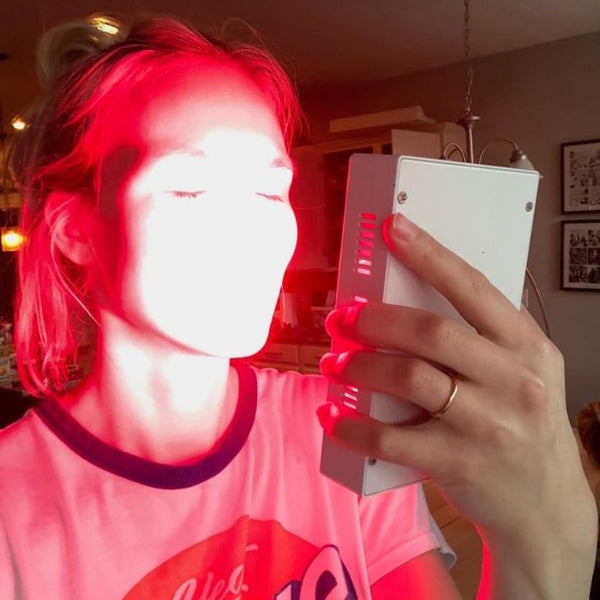
-
Build Quality: Durable materials and solid construction will ensure your device lasts through many treatments.
-
Portability: If you travel often or prefer the flexibility of treatment location, consider a lightweight and portable device.
6. Customer Reviews and Support

-
Reputable Brands: Research customer reviews and ratings to gauge the effectiveness and reliability of the device.
-
Warranty and Support: Check for a warranty that covers potential defects and consider brands that offer good customer support for guidance and troubleshooting.
Top Pick: Recommended RLT Devices for Hair Growth
One highly recommended brand for red light therapy devices is Koze Health. Known for their quality and efficacy, Koze Health's devices are specifically designed to promote hair growth with optimal wavelengths and power densities. Their products are user-friendly, well-built, and supported by a robust customer service team, making them a trusted choice for those looking to enhance their hair health through a red light therapy device.
-
Koze Health: Offers a range of devices, from handheld units to larger panels, all tailored for effective hair treatment. Known for their efficiency and safety, these devices make an excellent addition to both home and professional settings.
FAQs
Q1: How long does it take to see results from Red Light Therapy for hair growth?
- A1: While individual results can vary, many users start to notice improvements in hair thickness and the hair growth cycle within 2 to 3 months of consistent treatment.
Q2: Is Red Light Therapy safe for all skin types?
- A2: Yes, RLT is generally safe for all skin types. However, individuals with specific skin conditions or sensitivities should consult a dermatologist before starting treatment.
Q3: Can I use RLT in conjunction with other hair loss treatments?
- A3: Yes, RLT can be used alongside other treatments such as topical minoxidil, or finasteride. Combining treatments often leads to better results, but it's important to discuss this approach with a healthcare provider.
Q4: Are there any long-term side effects of using Red Light Therapy?
- A4: RLT is known for its safety, and no serious long-term side effects have been reported. However, as with any treatment, monitoring your response and adhering to recommended usage guidelines is crucial.
Q5: How often should I use my RLT device?
- A5: Most studies and manufacturers recommend using RLT devices 2 to 3 times per week for optimal results. Each session should last about 10 to 20 minutes, depending on the device's specifications and your personal needs.
By integrating Red Light Therapy into your routine and adhering to the guidelines outlined in this article, you can maximize your chances of achieving healthier, fuller hair. If you have any more questions or need further guidance, consider consulting with a dermatologist who can provide personalized advice based on your specific conditions.
Conclusion
Exploring the science behind Red Light Therapy (RLT) for hair growth reveals a promising, non-invasive treatment option that leverages the power of red light treatment, to enhance scalp health and stimulate hair growth increase the follicles. With numerous scientific studies backing its efficacy and a variety of devices available for both home and professional use, RLT offers a flexible approach to managing hair loss.
By understanding the mechanisms through which RLT promotes hair growth, recognizing its benefits, and selecting the right device, individuals can effectively incorporate this therapy into their hair care routines. Moreover, the minimal side effects associated with RLT make it a safe option for most people, though it's always wise to consult with a healthcare provider before beginning any new treatment.
Whether you're dealing with a male pattern hair loss or, baldness, thinning hair, or simply seeking to improve the health and appearance of your hair, RLT provides a scientifically supported solution that could potentially reverse the pattern hair loss, and enhance hair density and strength.

